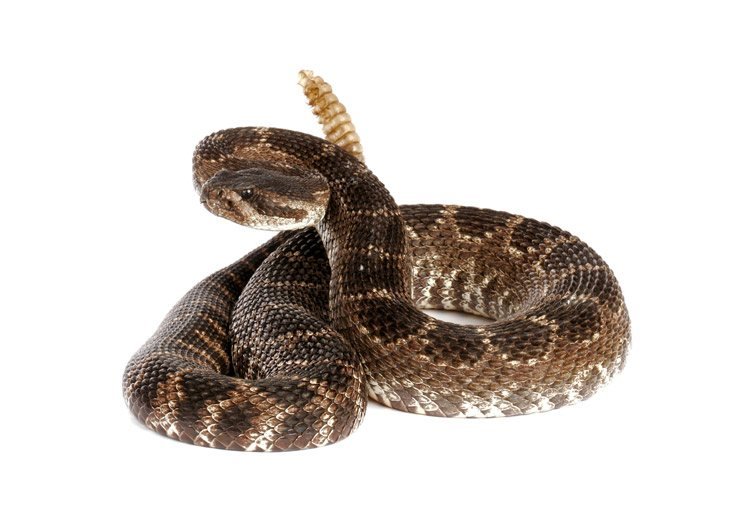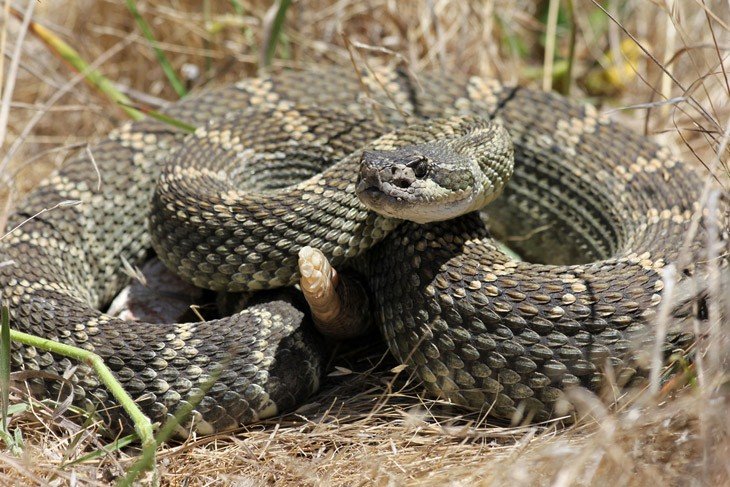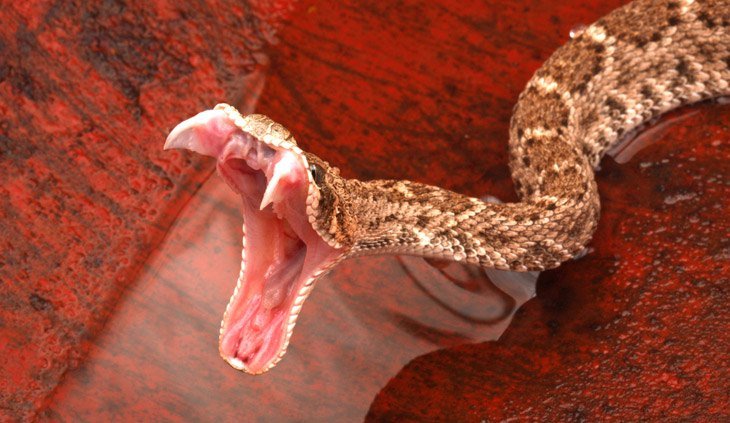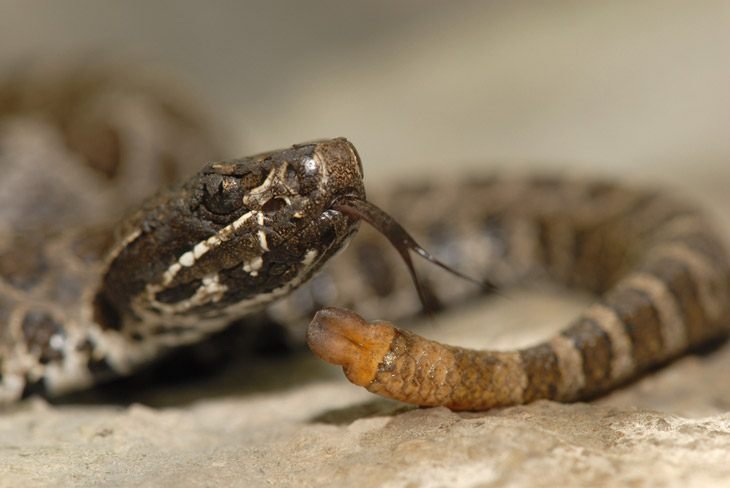Rattlesnakes are one of the scariest things you can find in the wild. Just the sound of the rattle is enough to send chills down your spine.
They are seen as mean, spiteful, and vicious predators whose goal in life is to bite unsuspecting trespassers in what they consider their territory.
But is it true? And if it is, just how far can a rattlesnake strike at you? How can you even identify a baby rattlesnake and are they dangerous? Let’s look at the answers.
Table of Contents
How Do I Know It’s A Rattlesnake?

While the rattling sound of a rattlesnake is the easiest way to identify one, they don’t always rattle. If you come across a snake and are curious if it is one of them, remember these common characteristics of a rattlesnake (Some of these require close examination, which I do not recommend)
- They should have rattles or buttons on their tail. It is possible that the brittle rattles can break off.
- They have a triangle head. The head is usually wider than the body.
- They have vertical, cat-like eyes.
- Look for a thick, heavy body.
- Rattlesnakes are members of the pit viper family. They have pits between their eyes which they use to sense heat and prey.
- There are 16 different varieties in the United States and 25 species in Mexico and South America. So there is no single pattern to look for. With that being the case, it is a good idea to search online and become familiar with the particular species of rattlesnake native to the area you are going to be.
As you can see in this video, the snake is attempting to flee its pursuers.
How Far Can A Rattlesnake Strike?

North Carolina State University says a rattlesnake can strike half its length. That is for an accurate well placed strike. When it is a defensive strike, they do have the ability to strike two-thirds of their body length.
The truth of the matter is, in most situations, the rattlesnake will attempt to flee from you unless it is provoked. Unless it is mating season, or you are standing on the snake itself, a rattlesnake is usually going to attempt to get away.
I would suggest getting no closer than 4 feet, and I prefer 6 feet between myself and the snake. It is always better to err on the side of caution. Remember, they rattle their tail to warn you. If it rattles, it doesn’t always strike, and it may strike and not rattle at all. Always stay alert.
What If I Get Bit?

Most people in the United States who suffer a rattlesnake bite receive it while attempting to kill or catch the snake. That being said, yes, a rattlesnake will bite you.
The University of Florida says that the number of fatalities from all venomous snake bites each year is between six and seven people. That includes every poisonous snake in the country. You are more likely to die of a spider bite than a snake bite.
But if you are bitten, there are some steps to follow.
- 1st. Get at least 20 feet away from the snake.
- 2nd. Stay calm or calm yourself. The faster your heart beats, the faster the poison moves through your body.
- 3rd. Keep the bitten part of your body lower than your heart at all times.
- 4th. Remove any restrictive clothing or jewelry from the area of the bite. It is going to swell up.
- 5th. Let it bleed for at least a minute. This will wash out some of the poison.
- 6th. Get to a hospital. Call an ambulance or for a rescue. Time is critical.
Here is a link to some detailed instructions I found.
- Do not ask someone to suck the poison out. That doesn’t work.
- Do not apply a tourniquet. It can hurt you more than the bite.
- If you can reach the hospital by phone, they can advise you the best steps to take.
How Do I Identify A Baby Rattlesnake?

Baby rattlesnakes are a lot like their parents. Since they are part of the pit viper family, they have small openings between their eyes. They sense heat with these openings. Their eyes will have vertical cat-like pupils and they may only have one button on their tail.
They will look a lot like their parents. The triangular shape of the head isn’t as easy to identify because their necks are usually the same size as their heads when very young. They are often mistaken for gopher snakes. If there is any doubt, assume it is a baby rattler and leave it be.
Young rattlesnakes are more likely to attack and will attack repeatedly. They have the same venom as their parents, so a bite will need to be treated the same.
Conclusion
I hope this helps you out. The best possible advice I can give is if there is any doubt, treat all snakes in the wild as poisonous and give them a wide berth. You should always stay observant while you are hiking or in your yard.
A little caution can go a long way in preventing any snake bite.
Have you crossed paths with a rattlesnake? Or can you think of a point I missed? If so, please let me know in the comments. If you find this article useful please share it.
